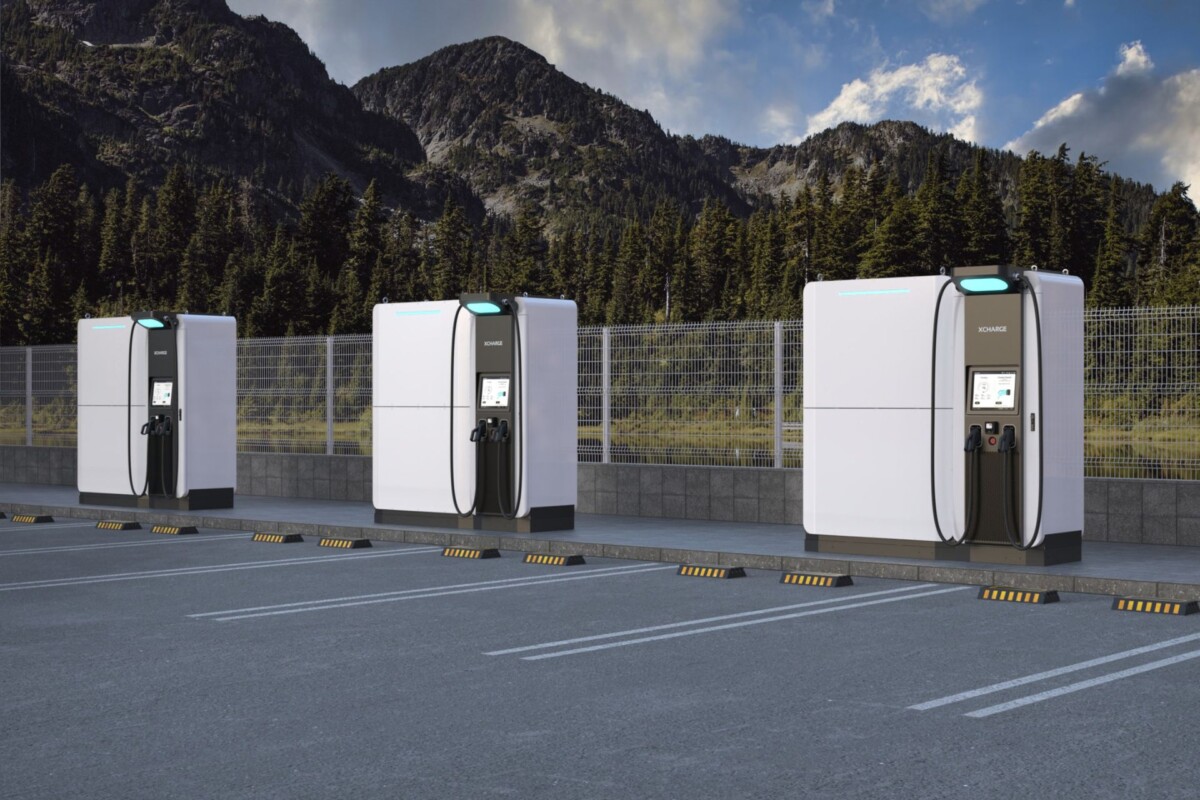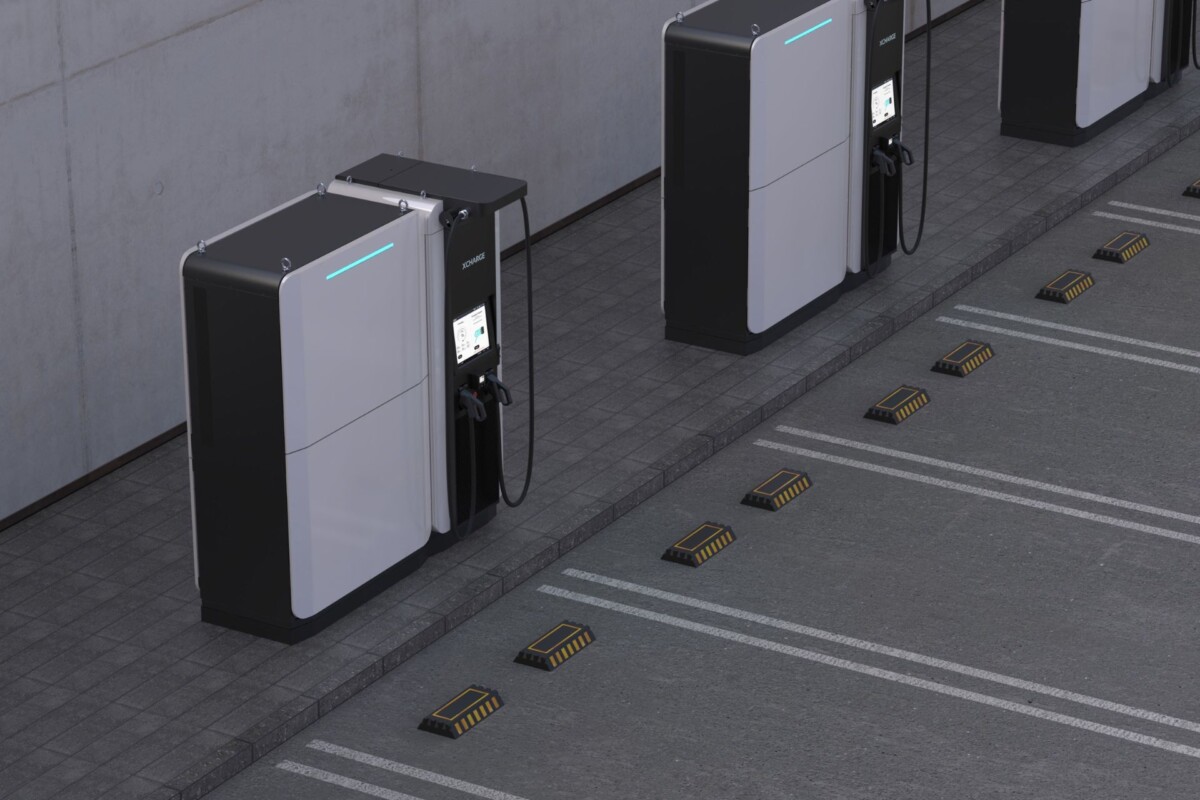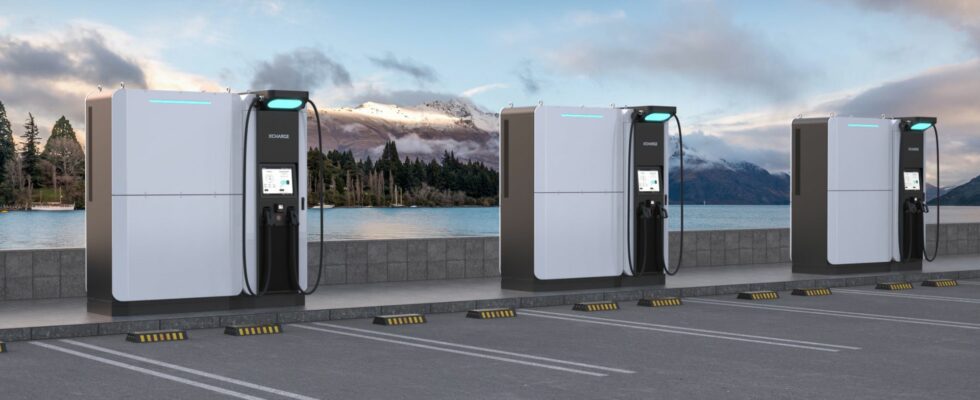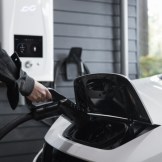The company XCharge unveils a brand new charging station equipped with gigantic batteries and intended for electric cars. Capable of storing up to 466 kWh of electricity, this solution should make it possible to limit tensions on the electricity network.
If the car with 1,000 kilometers of autonomy is fast approaching, with the Lucid Air in particular reaching 880 kilometers on the WLTP measurement cycle, recharging is still a major challenge. Indeed, autonomy remains one of the main obstacles to the purchase of an electric car, although the market continues to develop, with sales having exceeded diesels in December 2022 in France. But as the 2035 deadline is fast approaching, it is essential to develop the charging infrastructure network.
An innovative solution
According to the latest figures, the territory currently has 82,107 charging points. A constantly rising figure, but which is still far from the target of 100,000 announced by the government for the end of 2021. Fortunately, more and more players are entering the market, such as Electra, Ionity, TotalEnergies and even Fastned to name a few.
But another operator should soon be talked about. This is XCharge, a German company specializing in the development of charging stations for electric cars. A member of Avere-France, the company has just unveiled a new solution called NZS (NetZeroSeries).

At first glance, this new generation charging station looks like any other, with its large 19-inch touch screen and its two charging cables. But where it stands out is its built-in batteries, allowing store 233 kWh of electricity per terminal. A capacity which can however be increased to 466 kWh as needed, as specified in the press release. A figure which then makes it possible to recharge around 10 electric city cars without drawing energy from the network in real time.
A real asset, which then allows users of electric cars to charge their vehicle without using the power grid. Thus, during peak usage, and in particular during peak hours, it will be possible to use the energy stored in the batteries. This also represents an undeniable financial advantage, since it will be possible to use the network only when electricity is the cheapest, while the wholesale price has risen sharply in recent months.
In other words, the batteries integrated into the terminals can be recharged during the night, for example, to be operational during the day. The little extra is their Battery2Grid compatibility allowing the energy stored in the batteries to be reinjected if the network needs it, to avoid any instability which could end in a generalized power cut. A function that reminds us of the virtual power plants of Tesla and Nio.
Less expensive installation
But that’s not all. Because unlike a conventional charging station, the NZS solution does not require cumbersome and costly connection procedures. A simple 30/60 kW industrial socket is indeed necessary to connect it to the electrical network, thus greatly facilitating its installation. It is also a way of reducing costs for companies wishing to acquire a charging station.
It is then able to deliver up to 210 kW in direct current, at 800 volts. Compare to 250kW for v3 Superchargers and 350kW for Ionity. But beware, the terminal is capable of delivering 150 kW thanks to the batteries. To reach 210 kW, you have to add the 60 kW that come from the electricity grid. The terminal being limited to 250 amps, this therefore gives a charging power of only 100 kW with a 400 volt car.
A power that is by no means a record, compared to the 360 kW of Lidl and Kallista Energy and the 400 kW of Circontrol and Fastned, but is sufficient for most electric vehicles. Because for the time being, the strongest charging power that can be absorbed by a production vehicle in Europe is 270 kW, on the Porsche Taycan and Audi e-tron GT.

Competing with the future Tesla V4 Superchargers, which should display a maximum power of 350 kW and which could be equipped with solar panels to store electricity, these terminals are also equipped with 4G connectivity. A little extra: they are also equipped with an integrated payment device, which most terminals lack. If this has not been specified, they should logically be compatible with Apple Pay and Google Wallet.
On the other hand, the XCharge site does not mention Plug & Charge technology at all, which allows you to plug in your car without having to identify yourself manually. This is more and more widespread, especially at Ionity and ABB and offered by several manufacturers such as BMW, Cupra or even Mercedes and Tesla. The first NZS terminals have just been installed in Hamburg, Germany, while the other countries will be equipped during the year.
To follow us, we invite you to download our Android and iOS application. You can read our articles, files, and watch our latest YouTube videos.


